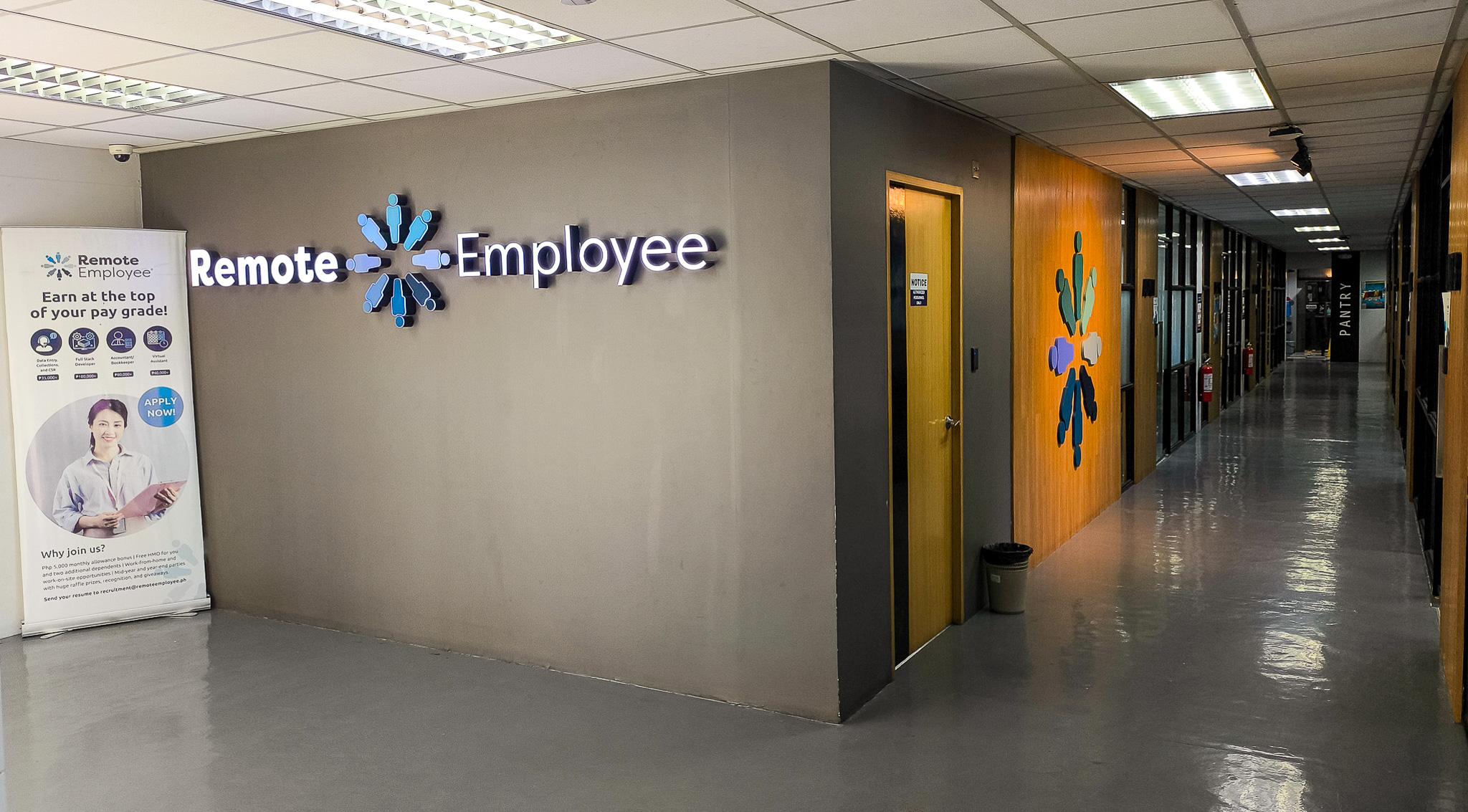Business
How Remote Employee Took the Outsourcing World by Storm

Remote Employee‘s success story is built on a seemingly paradoxical perspective. All its employees work remotely for clients while physically present in a single, state-of-the-art office.
This strategy has proven quite effective in outsourcing, and it offers unique advantages that traditional remote work or conventional outsourcing models struggle to match.
With a single centralized office, Remote Employee hosts a professional environment that enables teamwork and knowledge sharing among its staff. The setup also allows managers to implement easier management, training, and quality control—something that helps secure prompt client responsiveness.
At the same time, employees themselves benefit from the structure of a traditional office setting. Employees enjoy access to advanced technology, ergonomic workspaces, and face-to-face interactions with colleagues and supervisors.
The centralized office model also addresses one of businesses’ main concerns about remote work: it enhances data security. Remote Employee can implement strong cybersecurity measures over data access and handling by having all employees work from a single, secure location.
Driving Growth and Client Satisfaction
Remote Employee’s centralized workspace sets it apart from competitors, resulting in impressive growth and high client satisfaction. Since its founding in 2020, the company has expanded to employ nearly 600 staff members, and they all praise Remote Employee’s management.
A key factor behind this success is the company’s ability to attract and retain top talent. Remote Employee has become an employer of choice in the Philippines by freely offering opportunities for career development and social interaction. This strategy has resulted in a highly motivated workforce that can handle various tasks across various industries.
Scalability and Evolution
The centralized office model also enables Remote Employee to provide on-demand scalability for its clients. As businesses grow, their needs evolve, and Remote Employee can quickly assign additional team members or reallocate resources without the logistical challenges often associated with distributed remote teams.
In addition, to better serve clients, Remote Employee is reportedly developing a bespoke system to help clients manage their remote staff more effectively.
More and more companies are looking to hire remote workers and cut costs. This trend puts Remote Employee in a great position to grow. The company provides a unique mix of remote work benefits and traditional office perks. Such a strategy appeals to all kinds of businesses wanting to improve their operations, especially those needing to hire new talent from around the world.
Remote Employee is not just participating in the evolution of work; it actively shapes it. Intentionally challenging long-held assumptions about outsourcing and remote collaboration, the company has emerged as a trendsetter in the BPO world.
Remote work is no longer considered a perk but a necessity. Businesses understand that their hiring options are no longer constrained by geographical location or time zone. With Remote Employee ready to meet such needs, its influence in the future of global business operations will likely only grow stronger.
Business
Spynn’s PR Playbook for Startups Turning Funding into Market Leadership

Byline: Jennyfer Ann Valencia
The recent funding boom in India, where startups raised over $428 million between March 10 and March 15, 2025, reinforces the critical role of public relations (PR) in securing investor confidence and enhancing visibility. As competition intensifies, effective PR strategies help startups differentiate themselves and build a strong market presence.
Spynn, a PR agency for startups specializing in securing top-tier media coverage, enables startups to craft compelling narratives that attract investors and maintain a positive brand image.
The Role of PR in Startup Funding
A recent survey conducted by Spynn found that startups with a strong PR strategy are significantly more likely to secure funding rounds than those without. According to the research, nearly 70% of investors say media visibility and brand credibility helped their decision-making process. This highlights PR’s direct impact on a startup’s ability to attract investment.
PR helps startups articulate their value to investors by securing media coverage and highlighting their growth potential. High-profile placements lend credibility and set up startups’ potential, making them more attractive to investors. For instance, a well-publicized success story from a startup like Zolve, one of the top funding recipients, can drive further investor interest and strengthen its brand.
India’s funding surge spans sectors including Batterytech, Edtech, Gaming, Apparel, Aerospace, Manufacturing, Fintech, Energy, and Travel. While this presents opportunities, it also brings scrutiny. Startups must manage their reputations effectively, ensuring consistency in their messaging across media platforms. As a PR agency for startups, Spynn’s expertise in reputation management helps businesses navigate these challenges by maintaining a cohesive brand identity and reinforcing investor trust.
Establishing Credibility Through Media Placements
Research from Spynn also revealed that startups that get featured on Forbes, Business Insider, and other top-tier publications experience a 50% increase in inbound investor inquiries within six months. This shows the value of securing strategic media placements to reinforce credibility and market positioning.
Strong media coverage bolsters a startup’s credibility, reinforcing its market positioning and investor confidence. Spynn ensures startups secure coverage in authoritative outlets, helping them establish themselves as thought leaders. Beyond initial publicity, Spynn focuses on building long-term relationships with media, ensuring sustained visibility and brand consistency.
Spynn’s CEO, Matteo Ferretti, emphasizes the role of storytelling, “Effective PR is about coverage and creating narratives that resonate with audiences. Startups must highlight their unique value and demonstrate how they solve real-world problems.”
PR for Growth and Global Expansion
Spynn’s data indicates that startups leveraging international PR strategies are twice as likely to successfully attract foreign investors and expand into new markets. Media coverage tailored for global audiences enhances cross-border recognition and facilitates partnerships, making PR an essential tool for growth beyond domestic markets.
As Indian startups scale, a strong PR strategy facilitates global recognition. Spynn’s international media reach helps startups gain traction in new markets and attract foreign investors. This is especially crucial for sectors like Fintech and Edtech, where global expansion is key to success.
A well-executed PR strategy strengthens a startup’s digital footprint, ensuring a consistent and engaging presence across platforms. Matteo Ferretti highlights the importance of balance, “A successful PR approach integrates both digital and traditional media to maximize impact and audience engagement.“
Ethical Considerations and Future Trends
Transparency and ethical storytelling are vital in PR. Startups must ensure authenticity in their messaging to build lasting trust. Spynn upholds ethical PR practices that align with principles of sustainability and integrity.
Indian startups must adapt to evolving PR trends, including AI-driven outreach, digital media dominance, and deeper media relationships. As competition grows, startups that take advantage of PR will have a better standing for long-term success.
Spynn’s PR strategies equip Indian startups with the tools to navigate funding surges, enhance credibility, and drive growth. By securing impactful media coverage and managing reputation effectively, startups can strengthen investor confidence and expand their market presence. As India’s startup ecosystem evolves, PR remains an indispensable asset for sustained success.
-

 Tech4 years ago
Tech4 years agoEffuel Reviews (2021) – Effuel ECO OBD2 Saves Fuel, and Reduce Gas Cost? Effuel Customer Reviews
-

 Tech6 years ago
Tech6 years agoBosch Power Tools India Launches ‘Cordless Matlab Bosch’ Campaign to Demonstrate the Power of Cordless
-

 Lifestyle6 years ago
Lifestyle6 years agoCatholic Cases App brings Church’s Moral Teachings to Androids and iPhones
-

 Lifestyle4 years ago
Lifestyle4 years agoEast Side Hype x Billionaire Boys Club. Hottest New Streetwear Releases in Utah.
-

 Tech6 years ago
Tech6 years agoCloud Buyers & Investors to Profit in the Future
-

 Lifestyle5 years ago
Lifestyle5 years agoThe Midas of Cosmetic Dermatology: Dr. Simon Ourian
-

 Health6 years ago
Health6 years agoCBDistillery Review: Is it a scam?
-

 Entertainment6 years ago
Entertainment6 years agoAvengers Endgame now Available on 123Movies for Download & Streaming for Free
